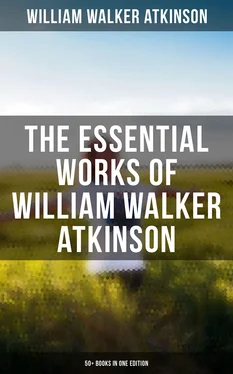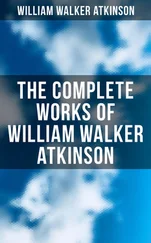In all argument there exists what is known as the Burden of Proof, which is an obligation resting upon those stating the proposition or advancing the hypothesis. The rule in the case is expressed by the legal maxim: “He who affirms must prove.” Stephen, a celebrated authority upon Evidence, says: “The burden of proof as to any particular fact lies on that person who wishes the Court to believe in its existence, unless it is provided by any law that the burden of proving the fact shall lie on any particular person.” In common discussion, the burden of proof is also held to rest upon the one who wishes to introduce a new thing as a substitute for an established thing, or who wishes to introduce a change. What is called the Presumption usually abides with the side opposed to that upon which the Burden of Proof rests. The Burden of Proof is always a disadvantage, and the Presumption always an advantage, for obvious reasons.
Chapter XII.
Evidence and Proof
Table of Content
EVIDENCE IS defined as “the material of proof.” There is a distinction between Evidence in Law, and Evidence in Logic. The distinction is brought out in the following definitions of the two, taken from the “Encyclopædic Dictionary.”
Evidence ( in Law ): “Proof, either written or unwritten, of allegations in issue between parties. The following are the leading rules of procedure: (1) The sole object and end of evidence being to ascertain the several disputed points or facts in issue, no irrelevant evidence should be admitted. (2) The point in issue is to be proved by the party who asserts the affirmative. (3) Heresay evidence is not admitted.”
Evidence ( in Logic ): “That which makes truth evident, or renders it evident to the mind that it is truth. It is generally limited to the proof of propositions as distinguished from axioms or institutions. Evidence is of two kinds, demonstrative and probable. Demonstrative evidence is of such a character that no person of competent intellect can fail to see that the conclusion is necessarily involved in the premises. Mathematics rest upon demonstrative evidence. All the propositions of Euclid are simply deductions from the definitions, axioms being assumed and postulates granted. But in every matter involving the establishment of concrete fact bearing on human conduct, demonstrative evidence is not obtainable, and the mind must content itself with probable evidence. Even in mathematics the premises are not concrete facts, but abstract hypotheses. Probable evidence is as if one held a delicate balance in the hand, casting into one scale every atom of evidence making for a proposition, and into the other all that could be adduced against it. According as one or the other scale predominates the proposition is accepted or rejected. Probable evidence may be of all conceivable degrees, from the faintest presumption to almost perfect certainty.”
Evidence, to be strictly direct must reach one through his own senses or consciousness. It follows, then, that there can be but very little direct evidence used in an ordinary argument, and that we must of necessity fall back upon indirect evidence, or the evidence of the sense or consciousness of other persons, reaching us in the form of testimony, either verbal, written, or traditional. And, in both direct and indirect evidence, as above defined, we must always make the clear distinction between evidence of facts and the evidence of opinion, inference, interpretation, or prejudice regarding the actual facts, existing in the mind of the person experiencing them.
Testimony is the statement of the experience of another than the hearer. It may be true or false; that is, it may be a true statement of experience, or an untruth having no basis in fact, or possibly a half-truth, or truth colored with untruth. The general presumption is that testimony is true, the presumption arising from the general belief that a man will state what is true rather than what is false, particularly in absence of motive to the contrary. The reputation of a witness for falsehood tends to weaken the belief in his testimony, while his reputation for truth is likely to strengthen the belief in his veracity. But it is always remembered that even a notorious liar will sometimes tell the truth; and that an ordinarily truthful man may occasionally tell an untruth. The judgment, powers of observation, and general intelligence of the witness are also factors in determining the probable accuracy of his testimony. The subject of the testimony also has a bearing in this matter, for one will be able to testify more accurately about a subject with which he is well acquainted, than would one unfamiliar with that particular subject. The possibility of mistake or error is also taken into consideration.
It is also generally conceded that the beliefs, preconceived opinions, trend of mind, and general prejudice for or against, of a witness is apt to sway his judgment and observation, usually unconsciously, and to influence his testimony to some extent. There are very few people who can rise above these influences in making observations or in relating experiences. We generally see that for which we look , and are apt to tell of things as we think they might have, or should have been, rather than as they actually were. The personal bias must always be taken into consideration. The correspondence of the fact testified to with the general laws of nature and ordinary actions of things and persons is a point in the favor of its testimony, and vice versa . For instance, one testifying that he had seen a man with two heads, or an elephant with wings, might expect to be doubted. Testimony, cropping out incidentally in the main story, is generally held more likely to be true than untrue, for the false witness generally confines his lies to the main points of his story. Silence regarding an important point is generally construed as indicating the non-existence of the occurrence or event in question, owing to the great probability that it would have been brought out in the testimony had it existed.
The truth of testimony is held to be corroborated by the concurrence of other witnesses in the main points, particularly if the stories vary in irrelevant minor details instead of suspiciously agreeing upon even the minor points not material to the issue. No two persons ever tell exactly the same story regarding the same event experienced by both. Each relates what he saw and felt, in the light of his previous training, experience, and trend of character.
Chief Justice Shaw makes the following interesting and instructive distinction between Direct and Circumstantial Evidence:
“Each of these modes of proof has its advantages and disadvantages; it is not easy to compare their relative value. The advantage of positive evidence is, that you have the direct testimony of a witness to the fact to be proved, who, if he speaks the truth, saw it done; and the only question is, whether he is entitled to belief! The disadvantage is that the witness may be false and corrupt, and the case may not afford the means of detecting his falsehood. But, in a case of circumstantial evidence where no witness can testify directly to the fact to be proved, you arrive at it by a series of other facts, which by experience we have found so associated with the fact in question, as in the relation of cause and effect, that they lead to a satisfactory and certain conclusion; as when footprints are discovered after a certain snow, it is certain that some animated being has passed over the snow since it fell; and, from the form and number of the foot-prints, it can be determined with equal certainty, whether it was a man, a bird, or a quadruped. Circumstantial evidence, therefore, is founded on experience and observed facts and coincidences, establishing a connection between the known and proved facts and the fact sought to be proved. The advantages are, that, as the evidence commonly comes from several witnesses and different sources, a chain of circumstances is less likely to be falsely prepared and arranged, and falsehood and perjury are more likely to be detected and fail of their purpose. The disadvantages are, that a jury has not only to weigh the evidence of facts, but to draw just conclusions from them; in doing which, they may be led by prejudice or partiality, or by want of due deliberation and sobriety of judgment, to make hasty and false deductions; a source of error not existing in the consideration of positive evidence.”
Читать дальше












